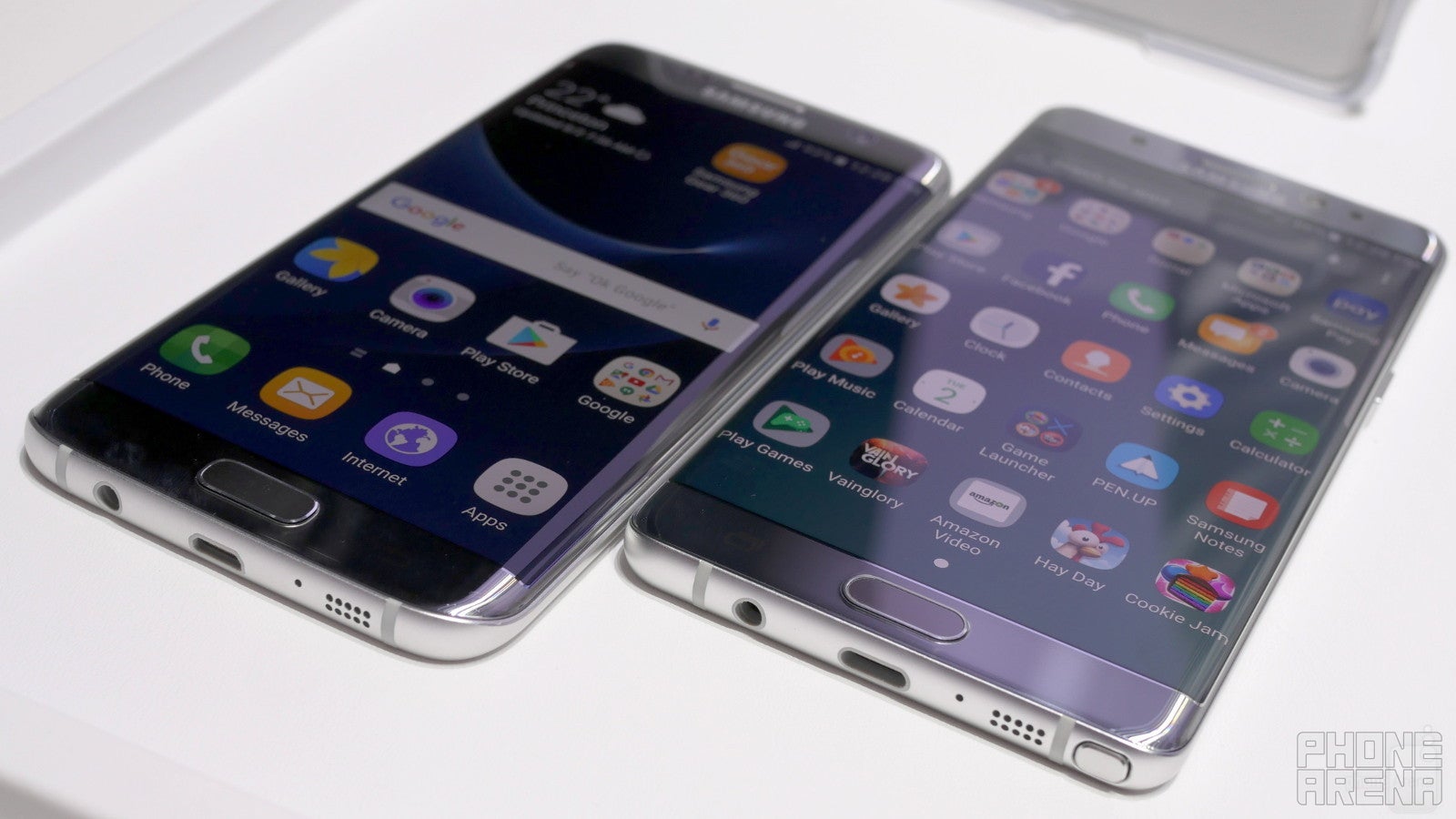Samsung's Galaxy Note phones helps introduce us to the company's love affair with curved over-the-edge displays on its phones, when back in September 2014 we saw the launch of the Galaxy Note 4 alongside the
Galaxy Note Edge. But then last year, while we did get the big
Galaxy S6 edge+, there was no stylus-equipped Note model with the same curved screen. Lest you think that the screen tech was losing favor with the manufacturer, this year we get one of the biggest shake-ups in the Note line to date, as Samsung moves away from a flat screen altogether and gives us a single curved-screen option for the
Galaxy Note 7. As we go hands-on with the new phablet, we absolutely had to check out its relation to this year's earlier curved-screen model, the
Galaxy S7 edge.
At first glance, the Note 7 and S7 edge look like two phones cut from the same cloth, a pair of handsets differing mainly in size. But a closer inspection reveals the many little ways Samsung's tweaked its design language for the new Note.
While the Galaxy S7 edge has curved front and back glass panels, the Note 7 ups the degree of curvature on that rear glass, giving it a shape that matches the front glass for a perfectly symmetrical construction.
Down below, Samsung's swapped-out the GS7 edge's micro USB connector for a reversible USB Type-C port – the first on a Galaxy flagship.
Internally, though, the GS7 edge and Galaxy Note 7 are very similar smartphones, powered by the same processors, sporting the same 4GB of RAM, and featuring the same very-highly-regarded 12MP camera. That's a nice decision on Samsung's part that lets users decide between the Note and GS7 edge based on things like screen size and the availability of the Note's S Pen stylus, while taking general performance out of the equation.
To be fair, the screen-size difference isn't huge: 5.5 inches for the GS7 edge and 5.7 for the Note 7 – with a quad-HD 1440 x 2560 AMOLED panel on each. And that leads to the GS7e having dimensions of 150.9 x 72.6 x 7.7mm, versus 153.5 x 73.9 x 7.9mm for the Note 7. A little counter-intuitively, the Galaxy S7 edge actually has the larger battery of the two (despite being a smaller phone), with a 3,600mAh component to the Note 7's 3,500mAh – we suppose the S Pen has to take up space somewhere. Both models support fast charging, as well as native wireless charging.
Samsung's making the smart move to give the Note 7 the same IP68 water resistance as the GS7 edge, and that protection even extends to the phablet's stylus, letting you write on the phone's screen while fully underwater. That could prove to be a huge asset, as capacitive touchscreens just don't work great when wet.
There's so much similar about these two phones that we can understand it being difficult to make a purchasing decision between the two of them. Do you go with a slightly more compact handset and a bigger battery, or a bigger phone that delivers stylus support? We haven't even mentioned the Note 7's big security upgrade, picking up another front-facing camera for iris-scan authentication. That may not drive you to pick up the Note 7 on its own, but it certainly adds to the list of reasons why you might want to go with this phone over the S7 edge. Of course, pricing will also end up factoring in, and for the moment we don't have a final retail price for the Note 7 – but you can bet it will fetch a pretty penny.
If you were going to pick up one of these Samsung handsets, which would you go with? Take a look at how they compare in the gallery below, and let us know your thoughts in the comments.














Things that are NOT allowed: